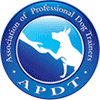Top 5 Preventable Dog Behavior Problems
This Training Tidbit is used with permission from our colleague, Carla Brown, of The Savvy Dog in Truckee, CA. Thanks, Carla!
Owners whose dogs have “behavior problems” keep trainers (and shelters) busy. Many of the problems are a result of people not understanding how dogs think, learn and communicate. Some of the more challenging behavior problems stem from root causes which could be avoided or minimized if humans knew more about the canine species.
Here is my countdown of the top-five causes of avoidable behavior problems in dogs:
#5: Diet
There are SO many dog foods on the market, how can you possible know what to choose? High protein, low carb, hypo-allergenic, raw….the list could fill this entire article! The Whole Dog Journal publishes a well researched list of recommended dry and wet foods each year. That’s one good place to start, but each dog has unique needs and may be allergic or intolerant to some foods. Intolerances and allergies can cause severe distress and pain which can effect a dog’s behavior. Also, diets which contain too much or too little of any nutritional component can cause imbalances that will manifest in behavior changes. Your veterinarian is the best resource for diet related questions.
#4: Puppies need to learn how to speak dog
If puppies don’t spend time with other dogs, they never learn how to speak dog. Dogs speak with their bodies. Yes, they bark, but most of the information they transmit to other dogs is non-verbal. How they hold their head, ears, tail and body speak volumes, but only if the dog knows the language. Puppies who are isolated from other pups or well behaved adult dogs often grow up fearful of other dogs and send conflicting messages. The best solution to this problem is to take young pups to puppy socialization and manners classes where well managed play with other pups is encouraged.
#3: Boredom
Dogs need mental stimulation and physical exercise to be happy and healthy. If they get too little of either, they will find ways to entertain themselves. Chewing up your favorite shoes or the sofa is often a sign of anxiety but can also just be entertainment. There are many ways to provide mental stimulation. Feeding some of your dog’s daily kibble out of a Kong or puzzle feeder makes him work for his food. Positive based training is a great way to give your dog’s brain a work-out and it helps build your relationship.
#2: Pain
Dogs (and cats) are very good at hiding pain. In the wild, an animal that shows weakness is likely to be hunted and killed. Sudden changes in a dog’s behavior can indicate pain or discomfort. Just like us, being in pain can cause a dog to be short-tempered or grumpy. Don’t ever discount sudden changes in your dog’s behavior or routine. Consult your veterinarian immediately.
And the drumroll please……
#1: Never being taught to be alone
Dogs are pack animals and they depend on the pack for survival. We are our dog’s pack. When we are away, they instinctually think something is wrong. For them to be happy and confident in a human world, it is our responsibility to teach them that being alone is okay and you will come back. If you are raising a young pup, crating him and leaving for varying amounts of time will do the trick. Older pups and adult dogs can be more of a challenge because they often come with unknown backgrounds from shelters. Many of these dogs have some form of separation anxiety, but most calm down after a few weeks in a new home when the owner offers a structured and predictable routine. There are homeopathic remedies that can be helpful with more severe cases.
Simply being observant and noting small changes in your dog’s behavior will help you identify problems which can be addressed before they can become major issues. Trust your instincts and your dog will thank you!









